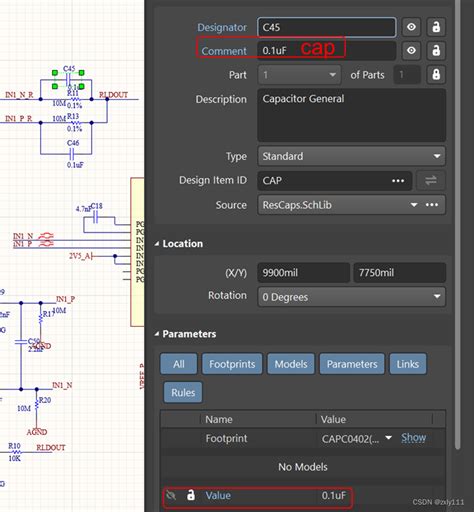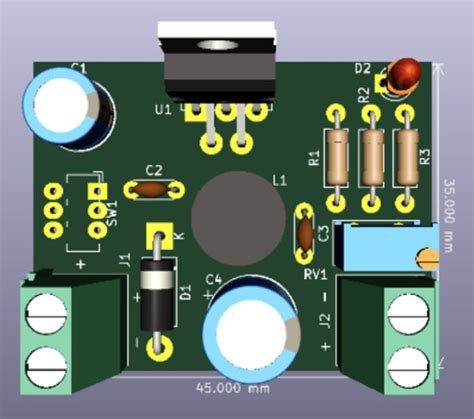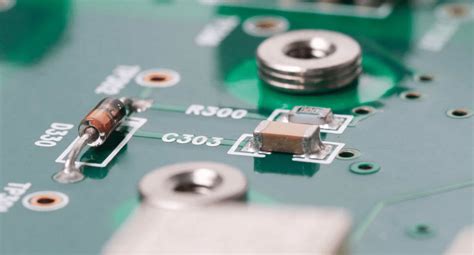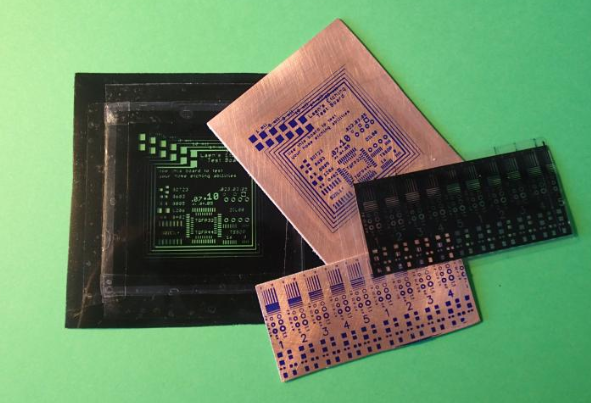Key Insights on Gerber Files in PCB Design Process

Key Takeaways
Understanding Gerber files is crucial for anyone involved in the PCB manufacturing process. These files provide the necessary layout schematics that guide the PCB manufacturing companies in producing custom circuit boards. The clarity and precision of your Gerber files directly impact the PCB manufacturing cost, as inaccuracies can lead to rework and delays, thus raising overall expenses. Additionally, knowing how to prepare your design for seamless Gerber file generation allows you to streamline your operations, enhancing your efficiency in the PCB manufacturing business.
The table below outlines some critical attributes of Gerber files and their significance in the PCB production lifecycle:
| Feature | Importance |
|---|---|
| Layer Information | Ensures accurate representation of circuit layers |
| Drill Data | Guides precise hole placement for components |
| Text and Symbol Information | Aids in identifying components and connections |
| Suitable Formats | Compatibility with various PCB manufacturing tools |
By mastering these attributes, you can significantly reduce mistakes throughout the design process and improve communication with your PCB fabricators. This pivotal understanding will help you navigate the complexities of PCB design more effectively, ensuring that your projects meet both functional specifications and budgetary constraints while advancing your journey in the PCB industry.

Understanding Gerber Files: A Beginner’s Guide
As you embark on your journey in PCB design, it is crucial to grasp the significance of Gerber files. These files serve as the backbone of effective PCB manufacturing, conveying detailed layout information essential for custom PCB production. Whether you are new to this process or have some experience, understanding Gerber files will streamline your workflow and enhance communication with PCB manufacturing companies.
Gerber files provide a standardized format that translates your design specifications into actionable data for fabricators, mitigating errors that could inflate the PCB manufacturing cost. Consequently, ensuring that your Gerber files are precise and comprehensive can significantly reduce overheads in your PCB manufacturing business.
"A well-prepared set of Gerber files is key to achieving a successful PCB production run."
This diligence guarantees that all components, traces, and layers are correctly represented, leading to a smoother transition from design to physical product. Furthermore, mastering this aspect of PCB design will position you favorably in an increasingly competitive market.
By making sure to generate accurate and optimized Gerber files, you can enhance the efficiency of the PCB manufacturing process while reducing delays and unnecessary expenses that might arise from miscommunication or design flaws.
The Role of Gerber Files in PCB Manufacturing
In the realm of PCB manufacturing, Gerber files serve as a fundamental building block that ensures the accuracy and efficiency of the production process. When you send your PCB design to PCB manufacturing companies, it is crucial to generate high-quality Gerber files that articulate every detail of your design. These files encapsulate vital layout information, including layer specifications, copper traces, drill placements, and silk screen placements. By providing these details, you facilitate a smoother transition from design to an actual circuit board. Understanding how to effectively prepare your Gerber files not only minimizes potential errors but also helps you manage PCB manufacturing costs effectively. A well-prepared file can reduce miscommunication between you and PCB manufacturing businesses while streamlining the entire production process. Consequently, investing time in mastering your Gerber file generation ultimately enhances your project’s success rate and enhances collaboration with manufacturers. Thus, whether you’re a novice or an experienced designer, recognizing the importance of these files can significantly influence the quality and speed of your PCB production endeavors.
Key Features of Gerber Files Essential for Designers
Understanding the key features of Gerber files is crucial for anyone involved in the PCB manufacturing process, whether you’re a novice or an experienced designer. At its core, a Gerber file serves as the blueprint for fabricating a printed circuit board (PCB), providing detailed information about the layers, components, and connections. One of the most important aspects of Gerber files is their ability to communicate intricate layout details to PCB manufacturing companies, ensuring that your design is translated accurately into a physical product. This includes essential features such as layer specifications, drill holes, and surface finishes that directly impact the PCB manufacturing cost and quality. In your designs, you should be aware of how different formats and revisions can affect not only your project’s timeline but also its overall success in the competitive landscape of the PCB manufacturing business. Properly optimized Gerber files help mitigate costly errors and facilitate smoother transitions between design and production stages. As a designer, prioritizing these features will enhance your efficiency and contribute to successful outcomes in your PCB projects.

Preparing Your PCB Design for Gerber File Generation
When you are ready to prepare your PCB design for Gerber file generation, it’s vital to understand the critical steps involved to ensure a smooth transition from design to manufacturing. Start by ensuring that your design adheres to the specifications given by PCB manufacturing companies. This includes double-checking the dimensions, layer stack-up, and positional alignments. Accurate documentation not only simplifies the process but can also significantly impact the overall PCB manufacturing cost.
Next, it’s essential to utilize appropriate design rules within your software; this includes setting up proper clearance values, track widths, and via sizes that align with industry standards. Moreover, simplifying complex features in your design can enhance manufacturability and reduce potential issues during the PCB manufacturing business phase.
Ensure that you include all necessary layers in your Gerber files: copper layers, solder mask layers, silkscreen layers, and drill files. Each of these components carries invaluable layout information that directly links your design with production quality and timeline. Remember that thorough preparation stands as a cornerstone of effective mass production in PCB manufacturing; it minimizes errors and helps avoid costly revisions down the line.
In summary, giving careful attention during this stage not only streamlines the Gerber file generation process but also establishes a solid foundation for successful collaboration with PCB manufacturing companies, ensuring efficient production runs at optimal costs.
Troubleshooting Common Issues in Gerber File Creation
When creating Gerber files, you may encounter several common issues that can disrupt your PCB manufacturing process. Understanding these challenges is crucial to ensure your files are suitable for production. One frequent problem is the incorrect layer orientation, where layers may not align as intended. Always verify that you have set the proper sequence and orientation, as this can affect how PCB manufacturing companies interpret your design. Another common issue is missing design elements; if certain features do not appear in your Gerber output, it could lead to costly mistakes during the PCB manufacturing process. It’s essential to carry out thorough checks and utilize layer stackup verification tools to confirm that every component is correctly represented.
Moreover, erratic file specifications such as incompatible file formats or incorrect units can hinder the workflow. Many PCB manufacturing businesses require specific formats and dimensions, so ensuring compliance with these guidelines can save time and costs associated with rework. Lastly, don’t ignore the importance of design rule checks (DRC); these checks can reveal potential problems early in the design phase, minimizing unexpected PCB manufacturing costs later on. By proactively addressing these issues during Gerber file creation, you can enhance your overall design integrity and streamline communication with your chosen PCB manufacturer, leading to a smoother production experience.

Advanced Tips for Optimizing Gerber Files for Production
When you are preparing your Gerber files for production, it’s essential to consider certain optimizations that can significantly impact the efficiency and cost-effectiveness of your project. First, ensure that your layout is as clean and precise as possible; this means checking for overlapping outlines or unnecessary layers, which can complicate the PCB manufacturing process. Utilize tools that can verify your design rules to catch potential issues before sending off the files. Consider the different PCB manufacturing companies you might work with; each may have specific requirements or preferences for file formatting and specifications. By tailoring your Gerber files to meet these requirements, you can streamline PCB manufacturing, thereby potentially reducing PCB manufacturing costs. Additionally, consider using dedicated software tools designed to optimize Gerber files, which can automatically adjust parameters like pad size and drill depth based on the capabilities of various manufacturers. This not only improves compatibility but also enhances the overall production efficiency of your PCB manufacturing business. Ultimately, paying attention to these details not only helps avoid costly errors but also sets a strong foundation for successful product development in an increasingly competitive marketplace.

Comparing Gerber and Alternative File Formats in PCB Design
When it comes to PCB manufacturing, the choice between using Gerber files and alternative file formats is crucial for effective communication and production efficiency. While Gerber files are the industry standard, providing detailed information about the layout of your PCB, other formats like ODB++ or IPC-2581 have emerged as potential alternatives. Each format has its own set of strengths and weaknesses, which can significantly impact both the design and production phases. For instance, while you may find that Gerber files are particularly adept at conveying precise layer information for PCB manufacturing companies, formats like ODB++ may offer enhanced capabilities in terms of documentation and data packaging.
If you consider the overall PCB manufacturing cost, using Gerber files may streamline the process, allowing you to avoid pitfalls associated with communication errors between designers and manufacturers. However, if your project requires more complex data structures or additional layers of information, exploring these alternatives might be beneficial. In any case, understanding how each format fits into the scope of your PCB manufacturing business is vital. Ultimately, while both Gerber files and alternative formats have their place in PCB design, considering factors like efficiency, clarity of communication, and compatibility with your chosen manufacturers will lead you to make more informed decisions about which file type best suits your project needs.
Conclusion
In wrapping up your understanding of Gerber files and their vital role in the PCB manufacturing process, it’s clear that these files act as the backbone of production. Whether you’re a beginner or a seasoned designer, recognizing the significance of these files is key to navigating the PCB manufacturing business effectively. As you delve deeper into PCB manufacturing companies, you will find that what differentiates high-quality outputs from mediocre results often lies in the details captured within the Gerber files. Focusing on aspects like accuracy and precision in layout design will not only streamline your workflow but can also significantly impact your overall PCB manufacturing cost. Ultimately, ensuring that your designs translate flawlessly into these files will contribute to both smoother production cycles and enhanced quality assurance, making them indispensable to your success in this competitive landscape.
FAQs
What are Gerber files and why are they important in PCB manufacturing?
Gerber files are standardized file formats used to convey the information necessary for PCB manufacturing. They specify the layout of the circuit board, including details such as traces, pads, and other components. Their importance lies in providing essential data to PCB manufacturing companies to ensure accurate reproduction of your designs.
How does the quality of Gerber files affect PCB manufacturing cost?
The quality of your Gerber files directly impacts PCB manufacturing cost. Inaccuracies or incomplete specifications can lead to production errors, which may require costly revisions and delays. Ensuring high-quality Gerber files can significantly reduce unnecessary expenses during the production process.
What should I include in my Gerber files for efficient PCB production?
To facilitate efficient PCB manufacturing business, you should include comprehensive details such as copper layer information, drill hole specifications, and silkscreen layers in your Gerber files. This minimizes back-and-forth communications with manufacturers and accelerates the production timeline.
How can I troubleshoot common issues in generated Gerber files?
Common issues include missing layers or incorrect drill locations. You can troubleshoot by using software tools that validate your Gerber files, allowing you to spot errors before sending them to a manufacturer, thus streamlining the overall PCB manufacturing process.







